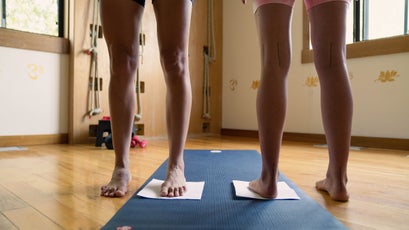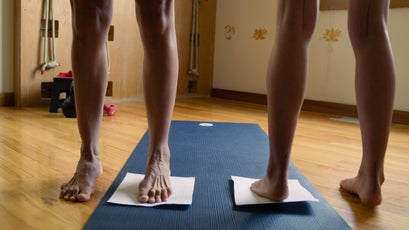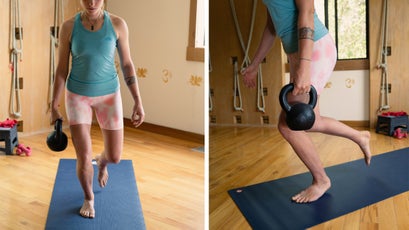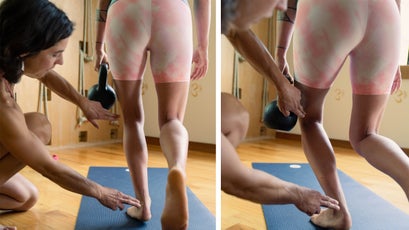How to Fix Fallen Arches
“],”renderIntial”:accurate,”wordCount”:350″>
Our bodies are a bit like properties: the physical composition is frequently resisting gravity. Now, think about a skyscraper with a collapsed foundation—it’s not just the ground flooring that are compromised: the complete architecture is at stake. Our feet and ankles are our basis, and weaknesses here can guide to a host of difficulties in other places. Fallen arches—also recognized as overpronation—are a frequent resource of local foot and ankle difficulties and can guide to difficulties even further upstream, in the knees, hips, and spine.
Fixing Overpronation Is An Within Position
Overpronation happens when the vertical, curved shape of our pure foot arch collapses although fat bearing. The composition of the hips naturally inclines the physique to collapsed arches: the femur bones angle inward, from a wide pelvis to a extra narrow base of help at the feet, exposing our bodies to forces that we have to fight with postural toughness. On top of that, genetics, muscle mass and connective tissue weak spot, alignment, and gait mechanics can all guide to fallen arches. Symptoms range but incorporate noticeable agony, tendinitis, and numbness at the foot and ankle as effectively as extra sneaky problems up the kinetic chain like knee and hip agony.
Usually, overpronation goes hand-in-hand with extreme interior rotation of the femurs, which you can see in the video clip down below. You can verify out your alignment by referencing a couple of anatomical landmarks: the vertical tendons of the hamstring muscles powering your knees and the achilles tendons powering your ankles. These ought to be oriented straight again. With extreme interior rotation, you may well see them angled a bit outward.
A person frequent resolution to overpronation is supportive shoe insoles, which fill the area of the arch and physically reduce it from collapsing. But that doesn’t address why the arch is slipping in the to start with place. The hip muscles, precisely the external rotators, sit underneath the glute muscles and enable enhance the neutral posture of the femurs and lessen legs. Activating and strengthening these muscles supports good alignment by the lessen physique and can enable naturally elevate and help the arches. In excess of time, the human body’s intrinsic capability to self-maintenance weak muscle mass, nerves, and connective tissue (which includes bone, ligaments, tendons, and fascia) enables us to make long lasting improvements to our composition. The down below workouts will enable you identify and keep alignment by reliable strengthening and mobility operate.
The Moves
Deep Hip Exterior Rotator Activation: The Fingertip Elevate
What it does: Engages the external hip rotators to align the anatomical landmarks we identified over and elevate the arches. Can help create toughness, elasticity, and resilience in the feet and ankles, knees, and hips.
How to do it: Stand barefoot and think about that you have two flat discs underneath both of your feet. Have interaction the deep hip rotators by ‘spinning the discs’ with no going your feet. This will truly feel like a mild twist of your still left hip counterclockwise and your right hip clockwise. Your femurs ought to spin open into external rotation. Take it easy your quads—the effort and hard work ought to be coming from your hips. Preserve even tension by the toes and the balls of your feet.
Your foot posture ought to keep on being static except for a recognizable elevate of the arch, ample to enable you to tuck your fingertips underneath your arch shut to the front of your heel. Just go considerably ample to orient all those tendon landmarks in their best position—otherwise, you can overcorrect into supination, placing extreme fat on the outside of the foot and lifting off of the significant toes. You might want the enable of a mirror or a pal at to start with.
Volume: Do a few to 5 repetitions of activating and comforting. Carry out this alignment various times per day, or each time you discover your self standing.
The next moves are part of the Floor Power series from Samsara Working experience, exactly where I operate as a coach. They will enable your physique keep the over structural alignments, and fortify your foot and ankle advanced all the way up to your hips, constructing a solid basis for movement. Ditch your footwear for these workouts to get acquainted with muscles and connections in your feet and legs that you might have by no means felt in advance of.
Foot Activation
What it does: Repairs the neuromuscular circuits from feet to brain, by activating dormant muscles of the foot and ankle.
How to do it: Stand barefoot with a corrected arch posture. Then, activate the muscles of both feet by gripping the ground with your toes. It ought to truly feel like a speedy snap that elevates your heels about a 50 percent-inch and delivers you into an active forefoot stance. Continue to keep your knees straight and delicate, and stay clear of executing a calf raise—this ought to all originate with the feet. The gripping motion ought to have interaction the achilles tendons, the calf muscles, the hamstrings, and the glutes. If you’re getting a difficult time executing this move, try out inserting a flat sheet of paper underneath your feet and trying to scrunch it.
Volume: Carry out one particular to a few sets of 5 to fifteen repetitions. Carry out this move frequently throughout the week.
Solitary Leg Forefoot Isometric Maintain
What it does: Rebuilds the connective tissues of the foot and ankle, strengthens muscles from feet to trunk.
How to do it: Stand on one particular leg, change your fat into your forefoot, curl your toes to grip the ground, and then elevate your heel. Maintain for thirty to 40 seconds. Use your absolutely free fingertips towards a wall for stability if required. You ought to truly feel the operate in your feet, achilles tendons, calf muscles, and thighs. Your precedence here is to preserve your arch and your hips secure. Get started with bodyweight, and insert load in the type of a dumbbell or kettlebell if it feels much too easy. If you choose to use fat, maintain it in the very same hand as the standing leg. Prevent if you have any agony.
Volume: Carry out one particular to a few thirty- to 40-second holds, resting for two minutes in among. Repeat two to 4 days a week.
Double-Leg Hop in Floor Power Foot Placement
What it does: Encourages bone overall health, elasticity, and appropriate foot and ankle stiffness.
How to do it: Think your active forefoot posture with corrected arches. Stiffen your ankle joint, holding it agency, shut to a right angle, and commence hopping with very low amplitude. In this move you are trying to train your feet and legs to endure speedy dynamic forces in the active forefoot posture so that you can far better carry out quick actions like working and bounding with no overpronation. You also might commence to truly feel the springiness of your plantar fascia and achilles tendons that enables us to hop, leap, and run with elasticity. Modify speed, peak, and amplitude around time, as tolerated. Prevent if you have any agony or fatigue.
Volume: Hop for 10 to 30 seconds, then relaxation for a minute. Repeat one particular to a few times. Do this among two and 5 times per week.
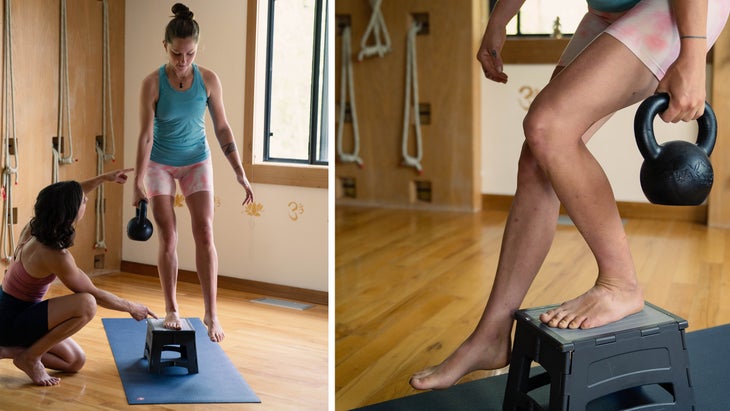
Solitary-Leg Squat on Box or Move
What it does: Builds toughness and power by improving the integrity of your arches and alignment, and difficulties your solitary-leg squat management and depth.
How to do it: You will need a move and a kettlebell or absolutely free fat for this move. Stand with one particular foot on the move, knee bent, and the other foot dangling in mid-air in front of you. Your standing foot ought to be flat, with corrected arch posture. Maintain the fat plumb underneath your shoulder and next to your hip on your standing-leg facet. Maintain your shoulders secure and your trunk upright. As you squat, only go as very low as you can although preserving alignment by the hip, knee, and arch. Then, remain very low and pulse deeper with each and every repetition. Use your absolutely free fingertips towards a wall for stability if required. Decide on a fat that enables you to carry out 6 to 8 repetitions with no sacrificing your type. Good type is the precedence, and you ought to truly feel this in the deep hip rotators, glutes, and hamstrings significantly less than in your quads. Prevent if you have any agony.
Volume: Two to 5 sets of 6 to 8 repetitions, with two minutes of relaxation in among.

